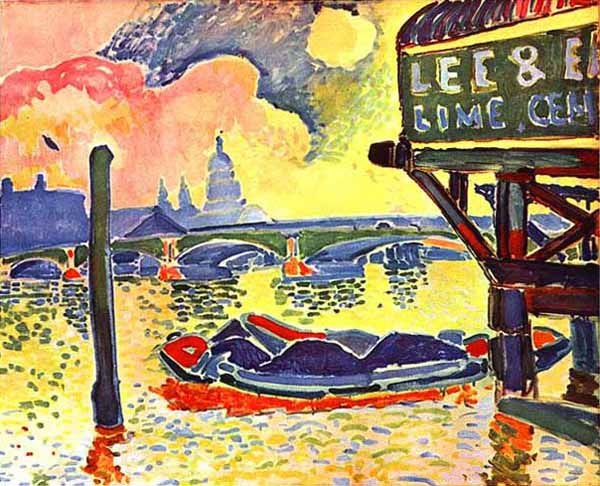Derain had committed himself on the future of art as early as 1901, two years after he had first met Matisse. To Derain, realism, as the literal imitation of nature, was over. In his view painting should offer not an imitation of nature but an equivalent of it. Derain had already dismissed the impressionists for trying to copy nature rather than understanding the fugitive effects of nature and what made them so arresting as a study separate from what makes a good painting. Imitation of the kind Derain and matisse decried gives us at best a low-keyed satisfaction. It confirms us in our own everyday vision , but it cannot give us that sense of heightened vitality, or life quickened and intensified, that great painting has to offer. André Derain was anything but low-keyed, and he knew enough about art history to realize that the next step would involve color. As Vincent van Gogh had written, “The future of art lies with a colorist such as there had never been before.” And what had Paul Gauguin said? That a “pound of green is more green than an ounce of green.” “Color for color’s sake!” was Derain’s succinct way of putting it. 
Blackfriars Bridge, Andre Deraine
|